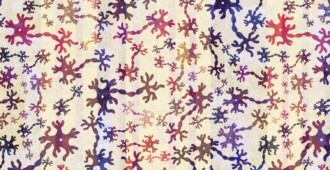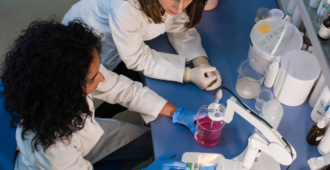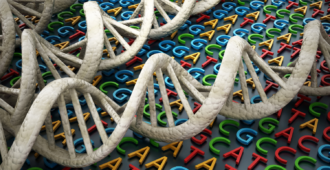Tissue donation has played a vital role in many important MND research findings. Without the generosity of individuals who decide to donate their brains and spinal cords to MND research, many of the recent advances wouldn’t have happened or at the very least, the relevance of the findings wouldn’t have been known!
In recent years, tissue donations from patients with the randomly occurring ‘sporadic’ form of MND that account for approximately 90% of cases of MND, and tissue donations from patients with the inherited form, have played an essential role in recent advances.
Timeless legacy
The most recent example of the impact that brain and spinal cord donation has played in MND research is the finding that a gene called VCP causes an inherited form of MND. But what do genetic studies have to do with tissue donation? In order to demonstrate that a mistake in a gene can cause MND, it is important to show the ‘effect’ that the gene mistake had in the body.
In the case of the VCP finding, a brain sample was donated by a patient with MND in the 1970s who had a form of inherited MND. The patient’s descendants then went on to be involved in the study where mistakes in the VCP gene were identified. Even though the brain sample was over thirty years old and had already been used once, the researchers were able to re-use it. By re-staining the sample, the research group were able to show that a protein called TDP-43 accumulates in motor neurones when the VCP gene is faulty.
This is an important finding as it provides further evidence that TDP-43 plays a pivotal role in the development of MND. Without that brain donation back in the 1970s, this finding wouldn’t have happened and we wouldn’t know about the strong link between VCP and TDP-43.
Discovering the importance of TDP-43 through tissue donation
Tissue donated by people with sporadic MND is also playing a vital role in better understanding the role that TDP-43 has in MND. Without people donating brain and spinal cord samples, we wouldn’t know that TDP-43 clumps together in about 90% of cases of MND.
We simply wouldn’t know how important TDP-43 is to MND.
Spot the difference
Having tissue from patients with MND is important, but so is having healthy samples to compare them with. Being able to ‘spot the difference’ between MND and healthy controls is as important as having the patient samples in the first place. Without these samples, it would be like trying to ‘spot the difference’ in one picture.
Make a difference
Tissue donation contributes to groundbreaking MND research leaving a lasting legacy to push our understanding of MND to a new level. It only takes one person to make a massive difference to the future of MND research – just as in the case of the discovery of the VCP gene.
Unfortunately, it isn’t possible to have a look at what happens inside motor neurones of a living patient – the closest we can get at the moment is through imaging studies, which as advanced as they are, are not able, and are not designed, to show what’s happening inside motor neurones. So, the only way researchers can learn about what happens in the brains and spinal cords of patients with MND is to study them.
If you’re interested in donating your brain and spinal cord to MND research then you can read more about it in our tissue donation information sheet.
Please remember that if you are interested then it’s important to set the wheels in motion by talking to an MND tissue bank to ensure that the appropriate paperwork is completed (details of banks are available in linked information sheet). This ensures that arrangements can be made as quickly as possible. It’s also important to tell your friends, family, doctors and neurologists that you would like to donate your brain and spinal cord to MND research so that everybody is aware of your wishes.
Tissue donation is just one way that people affected by MND can have an impact on MND research. If tissue donation isn’t for you, then you can find out more ways to get involved with research by visiting our ‘take part in research’ section of our website.






Comments are closed.